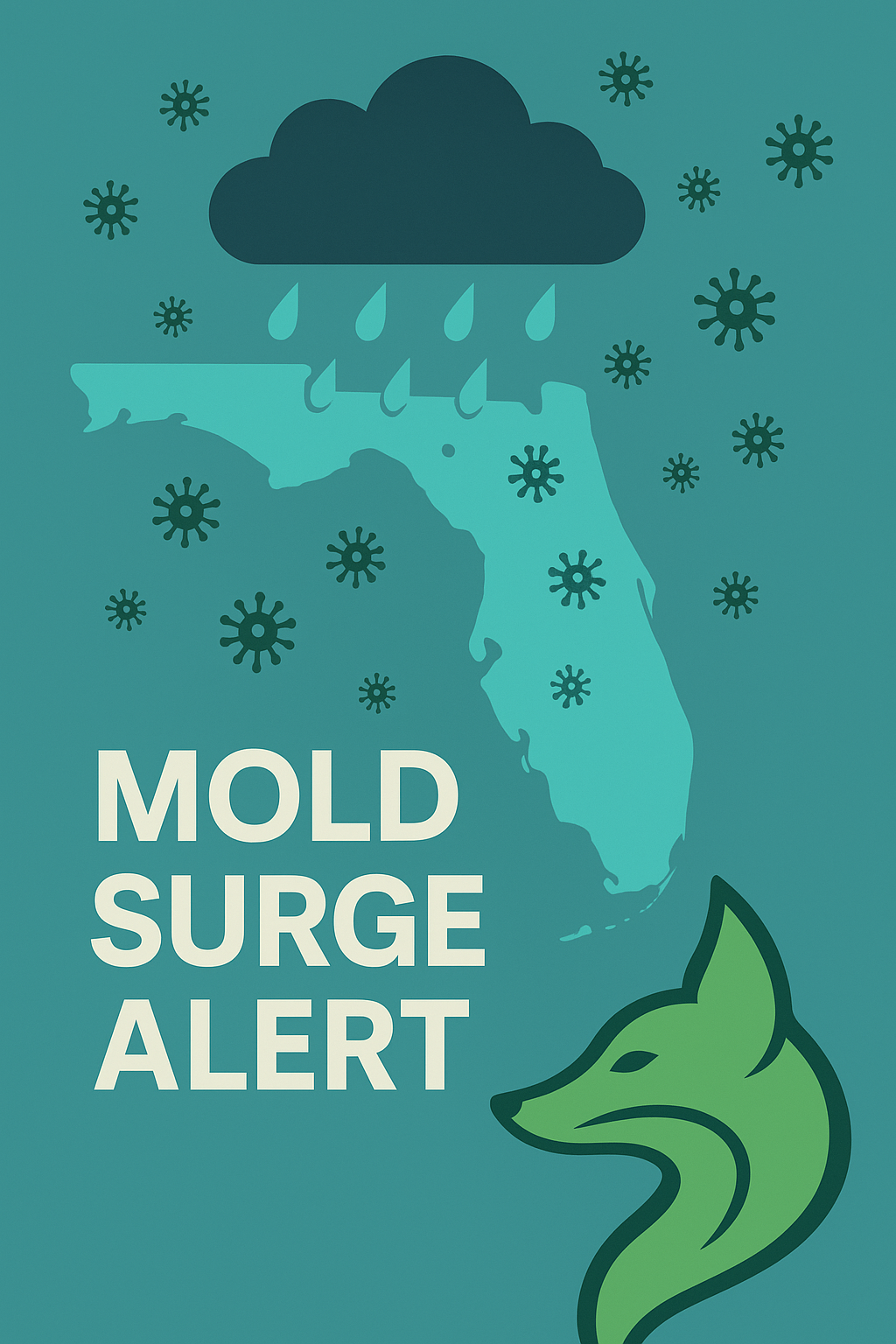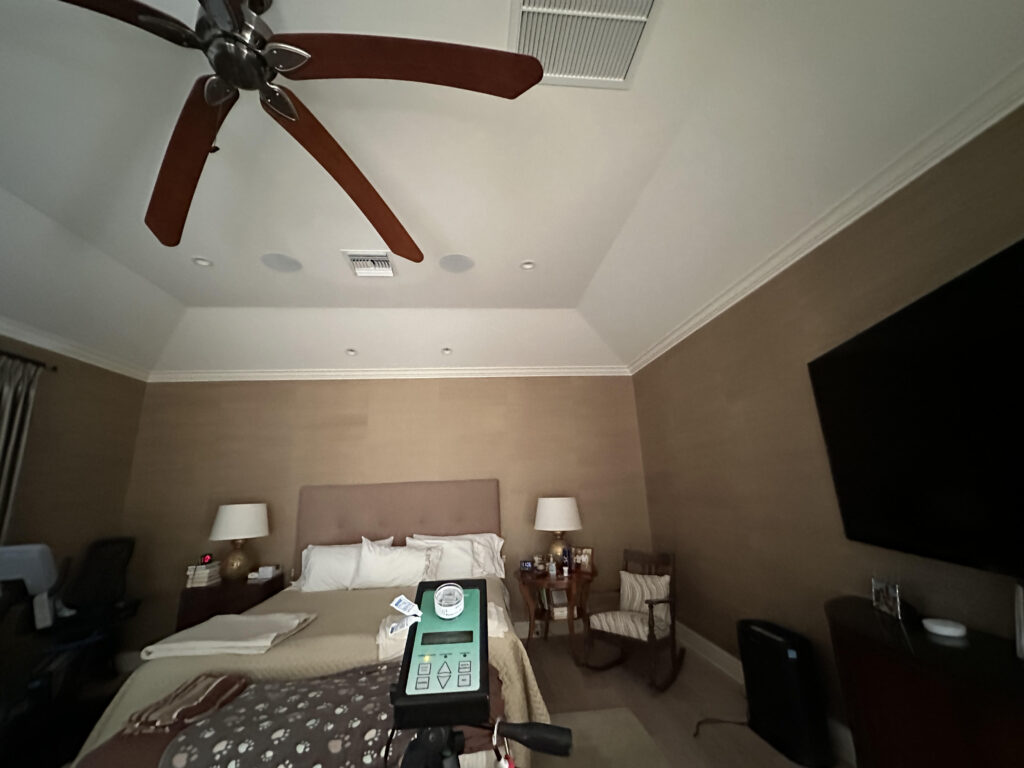South Florida’s first sea‑breeze thunderstorms have already started to fire, and the latest NOAA ENSO Diagnostic Discussion confirms what many meteorologists call “the eye of neutral.” In other words, the Pacific is no longer in La Niña, but it isn’t in El Niño either—just a wide‑open neutral state expected to hang on through at least August–October 2025. Climate Prediction Center
That neutrality may sound tame, yet seasoned Floridians know it’s a recipe for volatile rainfall: a week of blazing sunshine, followed by a day of tropical downpours that dump two inches before lunch. Those on‑again/off‑again soakings are exactly what mold needs to bloom—outdoors and inside your walls.
Below, Green Fox Air Quality breaks down what the science says, how it plays out for homes in Palm Beach County, and what you can do now to stay ahead of the spore surge.
What ENSO‑Neutral Means for the 2025 Wet Season
-
74 % chance of neutral conditions through summer and better‑than‑50 % odds into early fall, according to NOAA’s Climate Prediction Center. Climate Prediction CenterClimate Prediction Center
-
Higher Atlantic sea‑surface temps boost thunderstorm intensity even in neutral years, raising the odds of short‑lived but intense rain bands. Beaumont Enterprise
-
Forecast volatility: Without a strong El Niño or La Niña signal, seasonal projections swing more widely, making day‑to‑day rainfall harder to predict.
For homeowners, that translates to rapid wet–dry cycles. Exterior stucco soaks up moisture, then bakes in the sun. Attic humidity spikes when an afternoon downpour meets 92 °F roof decking. Those micro‑climates fuel fungal spore release outside and create ideal dew‑point conditions inside return plenums, supply trunks, and wall cavities.
The Science Behind “Spore Bursts”
Peer‑reviewed research and hospital data sets show that fungal spore counts can double or triple immediately after thunderstorms, driving upticks in asthma ER visits. Oxford AcademicPubMed When that storm‑laden air slips through soffit vents, leaky window bucks, or unsealed electrical penetrations, outdoor spores become indoor occupants.
“We routinely see spore monitors spike two‑ to three‑fold after a summer squall,” says Brad Fishbein, NADCA ASCS and Executive at Green Fox Air Quality.
“If your return plenum is dusty or your supply trunk has even a light film of condensate, those outside spores have food, water, and a ticket to ride your entire duct system.”
Moisture Sneaks In—Even When You Don’t See It
South Florida’s stucco‑over‑concrete construction is designed to shed rain, but small fissures form in:
-
Hose‑bib penetrations
-
Foundation settlement joints
-
Window and door bucks
-
Conduit sleeves for cable or AC lines
“Every extra inch of rainfall is another chance for those hairline cracks to wick water,” explains Brett Brunsvold, licensed mold remediator and President of Green Fox Air Quality.
“Once the cavity insulation or drywall gets damp, you won’t notice until the musty odor—or the lab report—tells the story.”
Wet‑Season Survival Guide for Homeowners & Property Managers
| Action | Why It Matters | How Green Fox Can Help |
|---|---|---|
| Schedule a NADCA‑compliant duct cleaning | Restores HVAC interior to Condition 1 and removes existing bio‑film that spores feed on | Full mechanical disassembly or robotic brushing to get every inch |
| Inspect & seal the exterior envelope | Blocks rain‑driven moisture at stucco cracks, sill plates, hose bibs | We photograph and document every penetration so your contractor seals the right spots |
| Clean coils & blower wheels | Improves latent moisture removal; dirty blowers grow Cladosporium fast | Coil‑in‑place cleaning, HEPA vacuum, and antimicrobial rinse |
| Audit attic & crawl‑space insulation | Cold ducts resting on damp insulation sweat and drip | Thermal imaging & dew‑point analysis pinpoint trouble zones |
| Benchmark indoor air quality (IAQ) now | Gives a “before” snapshot so post‑storm results are meaningful | Spore trap air sampling, particle counts, VOC screens |
What About “Moisture Meters”?
You might see ads claiming a handheld gadget can spot every hidden leak. Reality check: there’s no single “moisture detection device” that replaces a proper envelope inspection plus humidity and dew‑point monitoring. Professionals combine visual forensics, relative humidity logging, and targeted moisture readings to build a full picture.
Final Thoughts
ENSO‑neutral summers aren’t headline‑grabbing like El Niño, but for mold they’re a silent jackpot: warm seas feed pop‑up storms; storms crank up spore counts; spores hitchhike indoors through the tiniest breach. By acting before the daily downpours settle in, you’ll save thousands on drywall replacement, keep asthma flares at bay, and extend the life of your HVAC system.
Ready to storm‑proof your indoor air? Call Green Fox Air Quality at (561) 206-4307 or book your inspection online before the next rain band sweeps across the peninsula.


